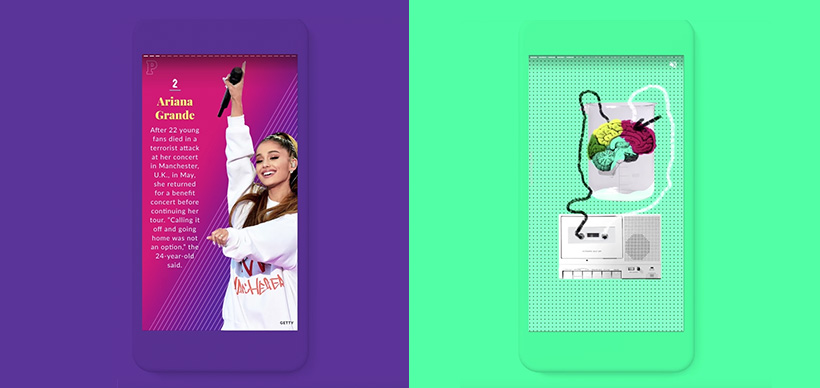 Perhaps the saying that “time stands still for no man” is more applicable for content creators and marketers than others. As the developments around Google’s AMP project proves, the acceptable practices of yesterday are not what will keep you relevant tomorrow. Fortunately, we’re here to help you keep the major marketing trend changes on your radar.
Perhaps the saying that “time stands still for no man” is more applicable for content creators and marketers than others. As the developments around Google’s AMP project proves, the acceptable practices of yesterday are not what will keep you relevant tomorrow. Fortunately, we’re here to help you keep the major marketing trend changes on your radar.
Google AMP’s big week sets the stage for remainder of 2018
Google’s Accelerated Mobile Pages (AMP) project hasn’t exactly been quiet since its February 2016 launch, but for most marketers, AMP has mostly been an interesting side project, not something that required an intense level of focus. In one fell swoop, it looks like Google has changed that mindset.
Years from now, we may remember the middle of February 2018 as being the breakout week that Google’s AMP showed it was a force to be reckoned with and a tool that marketers could no longer afford to ignore. So, what happened with AMP that will change its future? The answer lies in the quantity of updates and news Google AMP has been involved with in recent days, including:
AMP Stories
It was only a matter of time before Google joined in on the “stories” format. This week Google announced AMP Stories in an effort to capitalize on the format in the same way that Snapchat and Instagram have. Like other stories, AMP Stories gives publishers the ability to mix images, graphics, videos and text. However, unlike other stories, posts may be indexed and are searchable, therefore they have a SEO value that the stories on social channels can’t match. Likewise, Google has also made AMP Stories desktop-compatible to expand their reach.

During AMP Conf 2018, Google Senior Software Engineer Jon Newmuis touted the advantages of AMP Stories.
“We want all stories to be told in the best way possible for that story — and AMP Stories give publishers another approach to consider.” Newmuis said.
“For your users, these stories provide bite-sized, rich, visual content that is more easily consumable on mobile. They also allow you, as the publisher, to worry less about getting the tech just right and instead focus on telling the story the way it’s meant to be told.”
Mobile-first priorities
Though publishers do not need to use AMP, recent data shows that Google is clearly rewarding those publishers who do utilize it. In a recent study by analytics firm Chartbeat, the company found that those organizations who are utilizing AMP experienced a 100 percent surge in Google mobile search traffic, while organizations who are not using AMP experienced static levels of search traffic.
AMP for email
Perhaps one of the most exciting AMP-related developments is AMP for email. With AMP for email, developers are able to develop within Gmail the same kinds of interactive, engaging experiences they are developing other places.

Among other advantages, one of the key reasons why developers may want to utilize AMP for email is because it allows their organizations to keep content up-to-date in real time. Additionally, AMP for email allows those who receive emails to more easily engage and interact with the content. Perhaps most importantly for brands, recipients can do a lot more within the body of the email and don’t necessarily need to be pointed to a web page for a deeper experience.
Embedding posts from social media sites might violate copyright law, according to a ruling in a New York federal court this week. The decision, which is expected to be appealed, ruled that a site owner could not legally embed a tweet that featured a photographer’s copyrighted work.
Google Chrome has finally debuted its long-awaited ad blocker, after first announcing the impending functionality in June 2017. Chrome will now block ads that it deems to be intrusive or annoying. Examples include videos that play at full volume, ads that have hard-to-find exit buttons, and flashing display ads.
A new Twitter update is putting a greater emphasis on breaking news videos. The social channel is building partnerships with local stations to broadcast content when news breaks. Twitter users will find this content prominently displayed on their feeds when news breaks.
Instagram is now notifying users when others take screenshots of their stories. Instagram warns culprits after their first screenshot that it will inform story publishers of any other screenshot you take.








